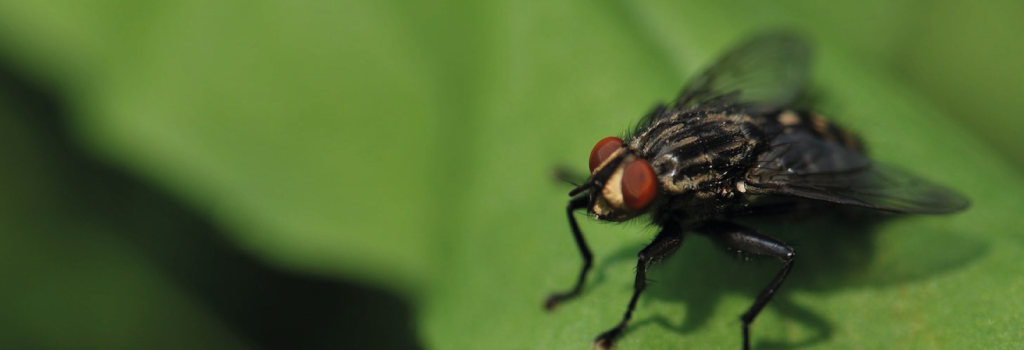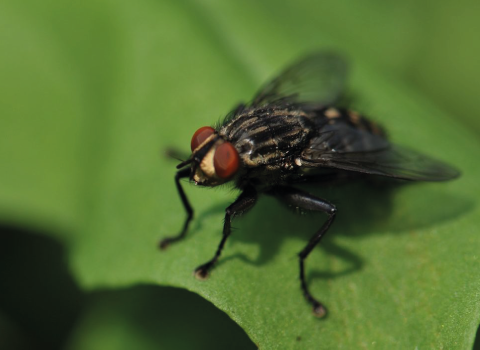House Fly
Scientific Name: Musca domestica (Linnaeus)
Order: Diptera
Description: House flies are 3/16 to 1/4 inch long with robust bodies and two clear wings. The thorax is marked with four dark stripes. Larvae are called maggots and are creamy-white and cone-shaped, with the hind end blunt and bearing breathing holes (spiracles) tapering to the head which bears black hook-like mouthparts.
A number of flies resemble house flies. The stable fly, Stomoxys calcitrans(Linnaeus),superficially resembles the house fly, but bears stiff, elongated mouthparts modified for biting animals and people and feeding on blood. They are very persistent and usually bite around the ankles. Their life cycle and food sources are similar to house flies, although development is slower (20 to 25 days from egg to adult).
Life Cycle: Female flies lay numbers of eggs in suitable larval food sources such as decomposing food in garbage, animal excrement or other decomposing organic materials. Eggs hatch within a day into small maggots. Within a week, maggots grow and develop through three stages (instars) before they inflate their last larval skin into a puparium(pupa). After 4 to 6 days, adult flies emerge. Development from egg to adult can be completed in about 8 days under optimal conditions, and 12 generations can occur each summer. Adults normally live up to 25 days but may overwinter.
Habitat and Food Source(s): Adult flies have sponging-sucking mouthparts, with which they inject mainly liquid food or food dissolved with regurgitated saliva. Larvae have mouthparts (mandibles) used to tease apart decomposing organic materials. Larvae feed with the ends of the bodies bearing the breathing pores on the surface and their narrow heads imbedded deep in the food source. Just before completing larval development, they leave their food source in search of a dryer place to pupate. This is the time many larval infestations become noticeable. Large numbers of house flies can develop in poultry houses and around barns and feed lots where animal excrement accumulates. House flies developing there can fly to nearby homes and become an nuisance. Around the home, house flies can develop in garbage and piles of fermenting lawn clippings.




